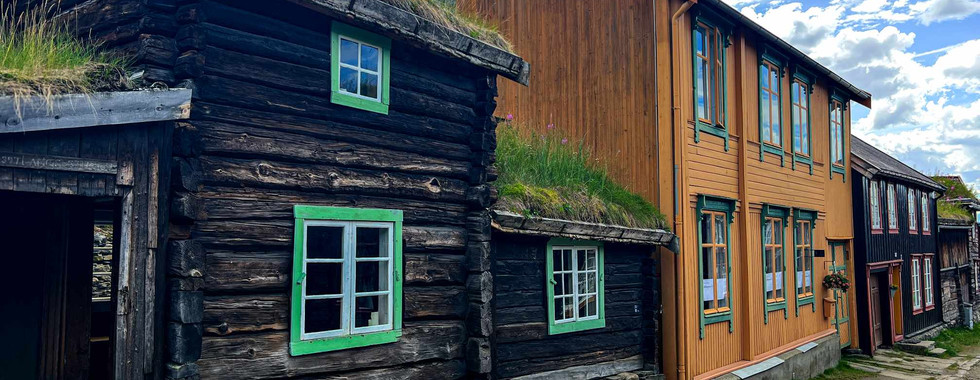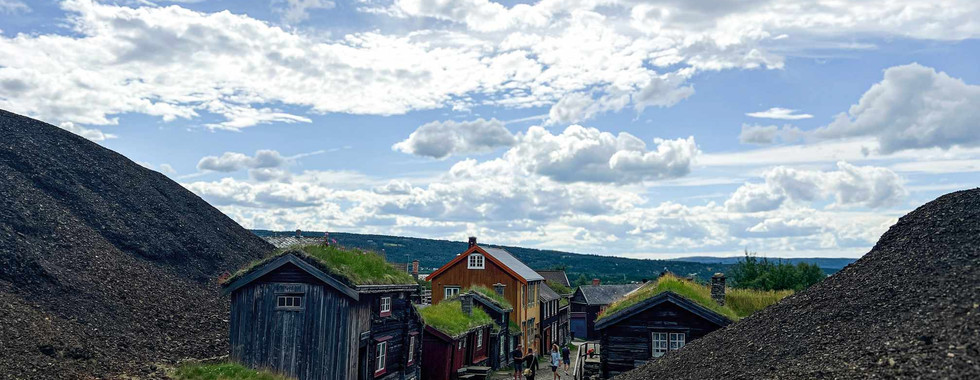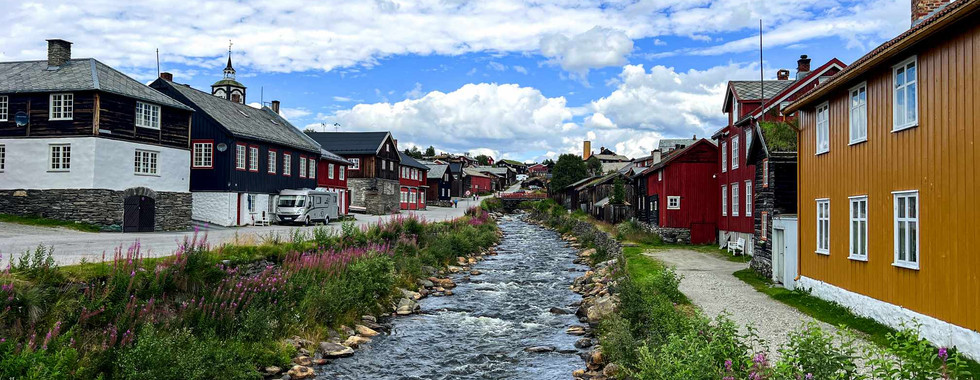(11)Day Eleven: Røros and the Kvikk Lunsj - The Colorful Tale of the Last Norwegian Adventure
- Elflilja
- Sep 16, 2024
- 3 min read
Updated: Oct 8, 2024
We set out from our Trondheim accommodation around 11:30 AM, sticking to our original plan: we were heading back to Sweden, but first, we decided to explore Røros, the picturesque little Norwegian town.
As usual in Norway, we encountered reindeer casually grazing by the roadside. :)
Reindeer are mainly raised by the Sámi people, and as we traveled, we got closer to the southernmost Sámi village in Sweden, Idre. We arrived in Røros around 2 PM, where it was immediately apparent that the town's charm lies not only in its historic buildings but also in the harmonious blend of its colorful houses.
Røros is a magical place in Norway's Trøndelag County, worth visiting not only for its visual appeal but also for its historical and cultural significance.

The town’s most famous street, Sleggveien, boasts several well-preserved buildings from the 17th and 18th centuries, reflecting the era of copper mining. These buildings, in traditional wooden town styles and often painted in vibrant colors, contribute to the town’s unique charm. Walking along the street, it's easy to imagine the daily lives of miners and their families who lived in simple but durable houses to withstand harsh living conditions and cold climate. Today, these buildings still bear traces of the miners' way of life and offer a glimpse into the town's past.
Røros is not only attractive for its historic buildings and old-world charm but also for its cozy shops, galleries, bridges, and cafés, which provide a unique experience. During our stroll, we encountered retro vehicles that added a touch of nostalgia to the town.
However, it’s important to mention that Røros is most renowned for its mining history. The beginnings of copper mining date back to the 17th century, when the first copper ore was discovered in 1644. This discovery initiated mining activities, quickly establishing the town as a significant industrial center in both Norway and Sweden.
Mining not only enriched Røros but also contributed to Norway’s industrial development. Miners worked long hours in challenging conditions, with low temperatures and high humidity contributing to their health issues. Over time, mining technology advanced from simple tools to more sophisticated machines, increasing the efficiency of the mining operations. In 1980, Røros was declared a UNESCO World Heritage Site, thanks to its well-preserved historical buildings and unique cityscape.
After thoroughly exploring Røros, we continued our journey towards Sweden but made a quick stop at a local shop for our last Norwegian purchase. This was our final opportunity to buy Kvikk Lunsj, but we didn’t want to buy it too early to avoid it melting in the car. Kvikk Lunsj is a Norwegian candy that has become an integral part of local culture and it’s similar to KitKat, but I’ll delve into its history further below.
Upon entering Sweden, we encountered red, under-renovation roads. Wooden posts along the road marked the way, helping drivers navigate the snow-covered landscapes in winter.
When we stopped at a rest area, we noticed that the area was now overrun with blueberry bushes—wild blueberries, smaller and more tart than those we’re used to at home.
Later, we refueled in Idre and continued to Björnliden, where our accommodation was located. As we left Idre, a sign warned of increased reindeer danger, and indeed, a few reindeer were grazing by the roadside. The accommodation was a cozy little cabin, not immaculately clean but charming. Now that we were in Sweden, we started encountering the wonders of self-cleaning places once more. :)
I spent the evening taking a walk in the nearby wild forest, facing challenges from mosquitoes and the mossy, peaty terrain. The forest's beauty and the discovery of white cottongrass (Eriophorum angustifolium) made it worthwhile, and I already visualized that the next day would require hiking boots and plenty of mosquito repellent. At the end of the day, we had dinner and tried to watch for the northern lights, which were forecasted to be visible, but unfortunately, we were not lucky.
Kvikk Lunsj – The Legend of Norwegian Candy
Kvikk Lunsj, Norway’s iconic chocolate bar, has been winning hearts since 1937, thanks to the Freia chocolate factory, and it’s become as much a part of Norwegian life as fjords and trolls! (Or like our Balaton slice and Túró Rudi in Hungary?) This crunchy wonder breaks into four pieces, with a tasty biscuit layer hidden inside. Yes, like a KitKat, but somehow even better. The greenish packaging reflects the freshness of Norwegian nature, and that’s no coincidence—it’s become the favorite snack of hikers, easy to carry in a backpack and packed with energy for conquering Norway's mountains. :)
The ads also add to its charm, always showing off Norway’s breathtaking landscapes and outdoor adventures. So, Kvikk Lunsj is more than just a chocolate bar—it’s a bite of Norwegian adventure, putting a smile on nature lovers’ faces for decades!





























































Comments